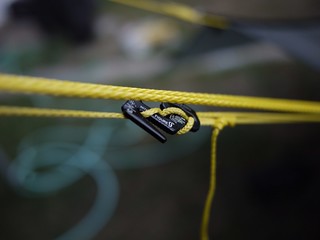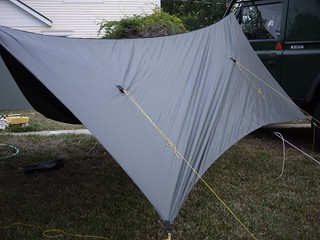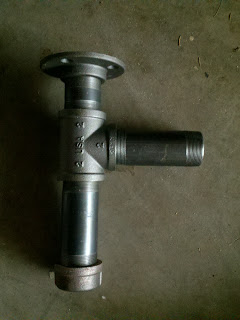This is part of my series on rope basics! For part one please visit:
Learning about rope and cordage
So of all the different kinds of rope, what right t do you purchase for your application? In order to do this, you have to ask yourself some questions. How strong a rope do I need? How much stretch can I tolerate? Will this rope get wet or freeze? What type of loads will this rope be subjected to?

Of course, when we’re talking survival cord, almost anything goes. Most people carry 550 paracord (which was used for rigging parachutes in the military, not sure if it still is). 550 cord is strong (hence the name, rated to be about 550lb breaking strength), lightweight, and versatile. It consists of an outer sheath with 7 small inner strands. Paracord stretches, but usually does not return to its original length. The inner strings can be removed and used individually to create a net, fishing line, trap line, or to extend the length of the cord. Bank line (nylon twine), even line from a child’s kite (keep it on the handle for ease of carrying) works great for survival. Remember though, when it comes to surviving anything you have with you at the time works.
For marine or water applications, rope must be chosen carefully. Certain rope is better suited for use as lines on a boat than others. For anchor line, nylon is the way to go. The stretch should provide some relief on the anchor so the boat doesn’t uproot it. On a sailboat, lines are most important. For the halyards you want a very low stretch, high UV resistant rope. Dyneema would be a good choice here, though some use polyester as well. The halyards must be able to hold the sails up tight while not giving much. When it comes to the sheets (for those of you that don’t know sailing, sheets are the lines attached to the control end of the sails) stretch is not as important, but still should not be too stretchy. Handfeel is incredibly important here so you don’t tear up your skin trying to haul the sheets in (that also means pick the larger diameter sheets ) Polyester is widely used for this purpose. Heck, polyester is widely used for most lines on a sailboat. Dyneema is expensive stuff, so lots of people use polyester, unless they are racing and rope selection means winning or losing a race.

Rope is, of course, widely used for rescue, rock climbing, rappelling, tree climbing (for you arborists), and caving. For these applications, almost all rope is kernmantle construction, and made of nylon. When a climber falls, a huge amount of force is placed onto the rope. If the rope were static, low stretch rope, a climber would most likely not survive a fall, as they would break their back. Thus, nylon rope is used so that the climber bounces at the bottom of the rope (called dynamic rope). Climbing ropes come in a variety of diameters, from skinny 8mm twin ropes (rope designed to be used in pairs, doubled up to every protection point) to chunky 13mm rescue rope. Static rope is used as well, but generally for rappelling, rescue, or for slings.
And by popular request from my friends over at Hammock Forums, I will touch on rope used in a hammock suspension! Hammock suspensions must deal with a large amount of force. Though mostly static force, we are asking a lot from our thin ropes that we use to keep us hanging in the trees! There is more than just our body weight on the hammocks though, when you consider angular forces, the additional weight from bounce when we get in them, etc. Amsteel, a brand of rope using (you guessed it) Dyneema, is one of the most popular ropes for the hammock suspension. The stuff is amazingly strong and very low weight. Dyneema (High Modulus Polyethylene) is, in my opinion, the best suspension out there. Though it costs more, the weight and size differences are huge! Amsteel is stronger than a metal cable with the same diameter. With my 2 hammocks I use Amsteel whoopee slings for the suspension connected to nylon tree straps. The only downside is the cost.

As far as tarp suspensions go, we want low stretch here as well. I like high visibility line so I don’t trip over them once they are in place. Zing-It, an arborist throw line, is popular due to its size, strength, and relatively cheap cost. I personally use Glowire sold on Lawsonequipment.com. It is a Dyneems/Dacron hybrid and highly reflective orange rope. It’s only rated to 225 lbs, which makes a perfect tarp line, but not suitable for hammock suspension. They put reflective tracers in the wire to really make it stand out.
Almost all lines used in hammock applications are braided. This is due to its higher strength. Twisted rope is really not used all that much in any application, except maybe on boats. Kernmantle is really a specialty rope that is used for limited and specific applications.

All that being said, next week I will be talking knots! I will list my top 10 knots, including how to tie and use them!
































